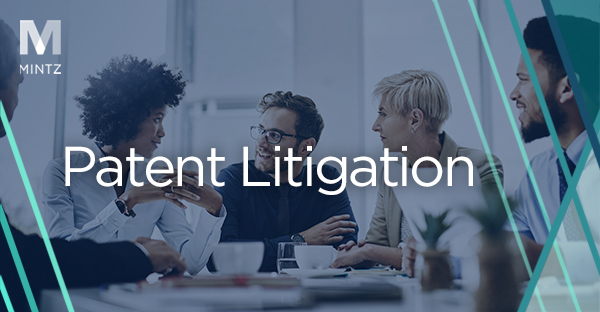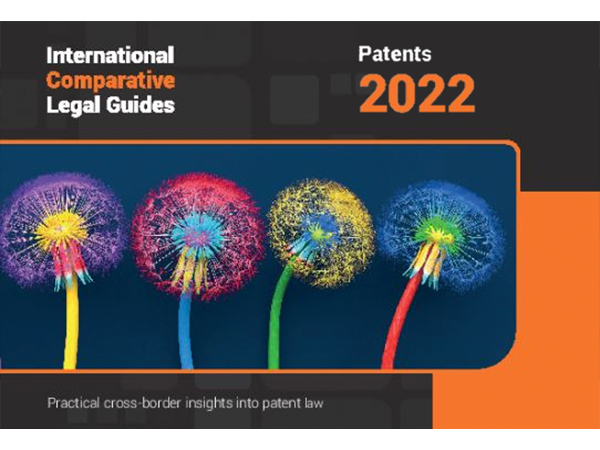
Intellectual Property
Viewpoints
Filter by:
Significant 2018 Patent Decisions and a Look Ahead
December 20, 2018 | Blog | By Peter Snell
This year the Supreme Court, United States Court of Appeals for the Federal Circuit, and the Federal District Courts penned a number of opinions impacting patent law. Here are some key takeaways from the past year.
Read more
Brewery Defeats Trademark Opposition by Conservative Public Figure Phyllis Schlafly
December 18, 2018 | Blog | By Michael Graif
Relatives of the late conservative political activist, Phyllis Schlafly, lost their appeal to prevent the Saint Louis Brewery, LLC (“the Brewery”) from trademarking the Schlafly name in connection with various beer products on November 26, 2018.
Read more
CAFC Affirms Prior Jury Verdict Admissible in Upholding $140M Verdict against Time Warner
December 17, 2018 | Blog
On November 30, 2018, the Federal Circuit affirmed a jury verdict awarding Sprint Communications Company, LP (“Sprint”) damages in the amount of $139,800,000.00 USD against Time Warner Cable, Inc., et al., for infringing five patents directed to Voice over IP technology (“VoIP”).
Read more
ITC to Review Controversial Apple-Qualcomm Decision
December 13, 2018 | Blog | By Michael Renaud, James Wodarski, Marguerite McConihe
As anticipated https://www.mintz.com/insights-center/viewpoints/2231/2018-10-alj-pender-apple-infringes-no-exclusion-order-qualcomm, on December 12, 2018, the International Trade Commission (“ITC”) issued a notice to review the Final Initial Determination and Recommended Determination (“FID”) issued by Administrative Law Judge (“ALJ”) Pender in In the Matter of Certain Mobile Electronic Devices and Radio Frequency and Process Components Thereof, 337-TA-1065 (“Certain Mobile Electronic Devices”), where ALJ Pender, despite finding that a valid patent was infringed and all jurisdictional requirements met, recommended that no Limited Exclusion Order be issued against Apple because it would be contrary to the public interest.
Read more
Efficacy of Preliminary Injunction Against Apple Called into Question
December 12, 2018 | Alert | By Michael Renaud, Adam Rizk, Robert Moore, Catherine Xu
Read about the preliminary injunction issued by the Fuzhou Intermediate People’s Court in China against Apple for its infringement of two Qualcomm patents.
Read more
Developing Methodologies for Resolving FRAND Disputes
December 6, 2018 | Video | By James Wodarski
Jim Wodarski discusses the global reach of SEP portfolios and the developing worldwide consensus among sophisticated intellectual property courts on methodologies for resolving FRAND disputes, specifically citing the decision in TCL v. Ericsson by a United States District Court.
Read more
Judge Applies WesternGeco Principles to Direct Infringement Under 35 U.S.C.§ 271(a)
November 30, 2018 | Blog | By Adam Samansky, Alexander Roan
A federal district court judge recently applied the recent U.S. Supreme Court decision in WesternGeco LLC v. ION Geophysical Corporation, in which the Supreme Court held that lost profits damages could be awarded for infringement occurring under 35 U.S.C.§ 271(f), to cover damages for direct infringement occurring under 35 U.S.C.§ 271(a) (see our prior post here for an overview of the case and the issues before the Court, and here for an overview of the Court’s June opinion).
Read more
Understanding Priority Claims for U.S. Patent Applications: Part 2
November 27, 2018 | Blog | By Christina Sperry, Elissa Kingsland
This article is second in a two-part series focusing on various issues related to priority claims in U.S. patent applications. While Part 1 is a general overview of how to make a proper priority claim, this article addresses how to make a timely post-filing priority claim in an application and how to correct an improper priority claim. Timeliness is crucial to avoid high fees and ensure that an earlier priority date is not lost. The procedures discussed below are post-America Invents Act (AIA) procedures applicable to applications and issued patents filed on or after March 16, 2013.
Read more
Prosecution Strategies for Avoiding Patent Eligibility Rejections for Diagnostics
November 19, 2018 | Blog | By Ken Jenkins
Under the Mayo/Alice test for patent eligibility, answering the questions of whether any particular claim is “directed to” a “judicial exception” without “significantly more” remains in many ways a substantial and unpredictable challenge for U.S. patent applicants in the diagnostic space. In cases where the detection processes are typically deemed “routine and conventional” (e.g., PCR) and the targets are known (e.g., expression of a known gene), claims must be crafted in ways that avoid rejections for both patent eligibility and anticipation and/or obviousness over the prior art. The recent PTAB decision in In re Srivastava et al. expressly addresses obviousness in this context, while highlighting a possible strategy for dealing with patent eligibility challenges as well (Appeal 2017-1981, Application 13/974,007, decided October 22, 2018; hereafter “In re Srivastava”).
Read more
European Patent Office Issues New Guidelines on Artificial Intelligence and Machine Learning
November 7, 2018 | Blog | By Michael Renaud, Marguerite McConihe
On November 1, 2018, the European Patent Office (“EPO”) issued new guidelines for the patentability of artificial intelligence (“AI”) and machine learning (“ML”) inventions which indicate that applications within this subject matter may be treated as largely unpatentable. The new guidelines, G-II 3.3.1, provide that AI and ML are “based on computational models and algorithms for classification, clustering, regression and dimensionality reduction, such as neural networks, genetic algorithms, support vector machines, k-means, kernel regression and discriminant analysis.” These “computational models and algorithms” are, according to the guidelines, “per se of an abstract mathematical nature.”
Read more
§102(b) Printed Publication: Unrestricted Distribution at a Trade Show
November 5, 2018 | Blog | By Andrew DeVoogd, Serge Subach
The U.S. Court of Appeals for the Federal Circuit opinion issued on November 1, 2018 clarifies the standard for a document to qualify as a “printed publication” under pre-AIA 35 U.S.C. §102(b) and reversed an earlier Patent Trial and Appeal Board (“PTAB”) decision.1 Specifically, the requirement that a reference be “publicly available” is not as narrow as the PTAB had interpreted. The Court held that “the standard for public accessibility [of an alleged prior art reference] is one of reasonable diligence, to locate the information by interested members of the relevant public.”
Read more
“A New Day” for Amending Claims in Post-Grant Proceedings
October 29, 2018 | Blog | By William Meunier, Daniel Weinger, Matthew Galica
U.S. Patent and Trademark Office Director, Andrei Iancu, recently gave a speech to the American Intellectual Property Law Association where he discussed a new rule proposal aimed at improving the patent amendment process during post-grant proceedings. Specifically, he informed the audience—and patent practitioners, generally—that the USPTO “will formally publish a notice seeking comments on a new claim amendment process for post grant proceedings.” The stated purpose of the proposed rule change is to “ensure balance” in post-grant proceedings by making the amendment process “feasible and meaningful” for the owners of challenged patents.
Read more
Federal Circuit Denies RPX’s Request for en banc Review in Applications in Internet Time v. RPX
October 26, 2018 | Blog | By Peter Snell, Daniel Weinger
Continuing our coverage of the Federal Circuit’s Applications in Internet Time, LLC v. RPX Corp. (“Internet Time”) decision, on Tuesday, October 23, 2018, the Federal Circuit denied RPX’s request to rehear the case en banc. Internet Time held that the Patent Trial and Appeal Board (“PTAB”) must use a flexible approach when determining what entities constitute real parties in interest for the purpose of inter partes review (“IPR”). See Applications in Internet Time, LLC v. RPX Corp., 897 F.3d 1336 (July 9, 2018) (“Internet Time”). Petitioners for IPR challenging a patent must identify all real parties in interest in their petition. 35 U.S.C. § 312(a)(2). The Director is not authorized to institute trial on the petition if the petitioner, real party in interest, or privy of the petitioner, was served with an infringement complaint for the patent in question more than one year before the petition’s filing. See 35 U.S.C. § 315(b).
Read more
District of Delaware Dismisses ANDA Applicant for Lack of Venue under TC Heartland
October 24, 2018 | Blog | By Adam Samansky, Peter Cuomo, Joe Rutkowski
On October 18, 2018, the United States District Court for the District of Delaware, in Bristol-Myers Squibb v. Mylan Pharmaceuticals Inc., No. 17-00379, held that venue was not proper in Delaware over Mylan Pharmaceuticals Inc. (“MPI”) in connection with a claim for patent infringement arising from Mylan’s submission of an Abbreviated New Drug Application (“ANDA”) seeking approval to market a generic version of the drug, apixaban.
Read more
Patent Infringement Claim Involving Complicated Technology May Require Additional Detail in Complaint
October 18, 2018 | Blog | By Andrew DeVoogd
A recent opinion from the Northern District of Texas is a reminder to all patent practitioners to heed pleading standards when drafting a complaint for patent infringement. In Lexington Luminance LLC v. Service Lighting and Electrical Supplies, Inc. d/b/a 1000bulbs.com, 3-18-cv-01074 (TXND October 9, 2018, Order), the court denied the defendant, Service Lighting and Electrical Supplies, Inc. d/b/a 1000bulbs.com’s (“1000bulbs”) request to dismiss the case for failure to meet the pleading standard, but granted its alternative request for a more definite statement. The plaintiff, Lexington Luminance LLC (“Lexington Luminance”), is now required to provide a more detailed complaint.
Read more
ALJ Cheney Holds that IPR Estoppel Does Not Apply to ITC Investigative Staff
October 18, 2018 | Blog | By Andrew DeVoogd, Daniel Weinger
In an Initial Determination finding that Fujifilm violated Section 337 by infringing two patents held by Sony, ALJ Cheney found another patent invalid after ruling that inter partes review (“IPR”) estoppel does not apply to the International Trade Commission’s (“ITC”) Office of Unfair Imports Investigations (“OUII”) Staff. In Magnetic Tape Cartridges and Components Thereof, Investigation 337-TA-1058, ALJ Cheney remarked that even if IPR estoppel prevents a respondent from raising certain references during an investigation before the ITC, IPR estoppel does not prevent Staff from raising those same references to invalidate a patent where Staff was not a party to the IPR. Id. at 106-07.
Read more
Strategies to Unlock AI’s Potential in Health Care, Part 1: Common Pitfalls to Avoid When Getting a Patent
October 12, 2018 | Blog | By Christina Sperry
As in any technology area, it is important to consider patent protection early in the development of an AI-related invention. However, AI inventions raise a number of particular issues that, if not addressed fully or at the right time, could be fatal to securing U.S. patent protection that would otherwise be available to prevent others from making, using, selling, or importing the invention. This article identifies common pitfalls in getting a patent for AI inventions and provides insights on how to avoid them. These principles apply not only to AI-related inventions, but also to digital health inventions more broadly.
Read more
PTAB Adopts the Phillips Claim Construction Standard in AIA Proceedings
October 11, 2018 | Blog | By Brad M Scheller, Daniel Weinger, Courtney Herndon
Today the Patent Trial and Appeal Board announced a final rule changing the claim construction standard for interpreting claims in inter partes review (“IPR”), post-grant review (“PGR”), and covered business method patent (“CBM”) proceedings. The Board retired the broadest reasonable interpretation (“BRI”) standard in favor of the standard used to construe patent claims in federal court and the International Trade Commission (“ITC”) as articulated in Phillips v. AWH Corp. In doing so, the Board announced that it will now consider prior constructions, either from a federal district court or the ITC, in construing a claim term in an IPR, PGR, or CBM, where such prior constructions are timely made of record. This rule change is another positive development for patent owners and should provide for consistent construction of the same term across multiple tribunals going forward.
Read more
ALJ Pender: Apple Infringes, but No Exclusion Order for Qualcomm
October 4, 2018 | Alert | By Michael Renaud, James Wodarski, Robert Moore, Marguerite McConihe
Read about an International Trade Commission in which a judge ruled that Apple infringed a valid Qualcomm patent, but recommended against an exclusion order for Qualcomm.
Read more
Federal Circuit Upholds Trade Show Catalog As Prior Art in Nobel Biocare Servs. AG v. Instradent USA, Inc.
September 25, 2018 | Blog | By Peter Cuomo, Courtney Herndon
Recently in Nobel Biocare Services AG v. Instradent USA, Inc., the Federal Circuit affirmed a decision of the U.S. Patent and Trademark Office’s Patent Trial and Appeal Board (“the Board”) in an inter partes review (“IPR”) finding certain claims of U.S. Patent No. 8,714,977 (“the ’977 Patent”), directed to dental implants, unpatentable as anticipated. The Nobel decision is the latest in a recent line of Federal Circuit cases holding that materials distributed at conferences, trade shows, and meetings are publically available “printed publications” within the meaning of pre-AIA 35 U.S.C. § 102(b).
Read more
Explore Other Viewpoints:
- Antitrust
- Appellate
- Arbitration, Mediation & Alternate Dispute Resolution
- Artificial Intelligence
- Awards
- Bankruptcy & Restructuring
- California Land Use
- Class Action
- Complex Commercial Litigation
- Construction
- Consumer Product Safety
- Cross-Border Asset Recovery
- Debt Financing
- Direct Investing (M&A)
- Diversity
- EB-5 Financing
- Education & Nonprofits
- Employment
- Energy & Sustainability
- Environmental Enforcement Defense
- Environmental Law
- FDA Regulatory
- Federal Circuit Appeals
- Financial Institution Litigation
- Government Law
- Growth Equity
- Health Care
- Health Care Compliance, Fraud and Abuse, & Regulatory Counseling
- Health Care Enforcement & Investigations
- Health Care Transactions
- Health Information Privacy & Security
- IP Due Diligence
- IPRs & Other Post Grant Proceedings
- Immigration
- Insolvency & Creditor Rights Litigation
- Institutional Investor Class Action Recovery
- Insurance & Financial Services
- Insurance Consulting & Risk Management
- Insurance and Reinsurance Problem-Solving & Dispute Resolution
- Intellectual Property
- Investment Funds
- Israel
- Licensing & Technology Transactions
- Life Sciences
- Litigation & Investigations
- M&A Litigation
- ML Strategies
- Medicare, Medicaid and Commercial Coverage & Reimbursement
- Mergers & Acquisitions
- Patent Litigation
- Patent Prosecution & Strategic Counseling
- Pharmacy Benefits and PBM Contracting
- Portfolio Companies
- Privacy & Cybersecurity
- Private Client
- Private Equity
- Pro Bono
- Products Liability & Complex Tort
- Projects & Infrastructure
- Public Finance
- Real Estate Litigation
- Real Estate Transactions
- Real Estate, Construction & Infrastructure
- Retail & Consumer Products
- Securities & Capital Markets
- Securities Litigation
- Special Purpose Acquisition Company (SPACs)
- Sports & Entertainment
- Strategic IP Monetization & Licensing
- Tax
- Technology
- Technology, Communications & Media
- Technology, Communications & Media Litigation
- Trade Secrets
- Trademark & Copyright
- Trademark Litigation
- Venture Capital & Emerging Companies
- White Collar Defense & Government Investigations
- Women's Health and Technology





